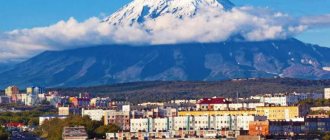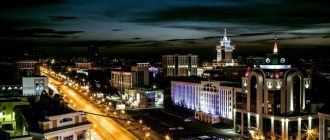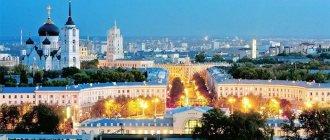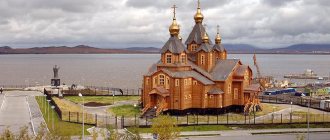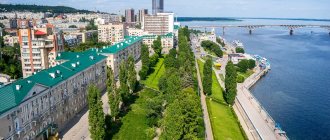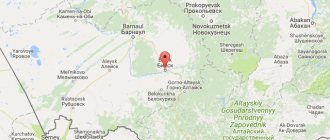Interesting pages of history
How did Gatchina appear? The history of the city is unique; it is connected with the reign of Catherine II. It was during that period that a huge estate was located here - the Gatchina Manor. The Empress erected the Great Gatchina Palace. In 1783, Grand Duke Pavel Petrovich, the future Russian Emperor, became the owner of this luxurious mansion. It was under him that the original park buildings appeared here, and large-scale work was carried out to rebuild the palace. By decree of Pavel Petrovich in 1796, Gatchina received the status of a city.
Catherine II and Grigory Orlov
In 1765, Catherine II gave the Gatchina estate to her Count Grigory Orlov. Thus, the empress wanted to thank her favorite for his faithful service. After all, it was thanks to the coup he organized that she ascended the throne.
The count zealously set about organizing the estate. On his initiative, the architect Antonio Rinaldi was invited from Italy to design the palace. The result of the work of the Italian master and many years of construction was the famous Gatchina Palace, which combined an ascetic appearance and exquisite interior decoration.
On his estate, Grigory Orlov engaged in his favorite game hunting and received guests, including the Empress. But fate did not allow the count to live long in the magnificent residence. He died two years after construction was completed.
Appearance of the name
How did such an unusual name – Gatchina – come about? A description of the history of the city indicates that the village of Khotchino was previously located here. The first mention of its existence dates back to 1500, found in the Novgorod scribe book. Further, the settlement is listed in Swedish books of 1618-1623 as the village of Hotzino by, located in the Dyagilinsky churchyard. There is a version according to which such a toponym arose from the shortened form “hot” of one of the personal ancient Russian names (Khotina, Khotimir). The second version considers the word “hot” as a variation of the ancient Finnish word “hatsha” (an area where the forest was burned down along the arable land).
There is another version, according to which on the site of Gatchina there was once a temple of the pagan goddess Khochena, hence the name of the village of Khotchino.
By the middle of the 17th century, instead of the dull consonant “x”, the letter “g” appeared in the name, as a result the village began to be called Gotchino, and then Gotchinskaya manor.
By the end of the same century, the name “Gottino” finally passed into its modern form. Emperor Alexander III often called this place “dear Gatchino.”
In 1923, Gatchina was renamed. The Leningrad region in those days underwent serious transformations, for example, Gatchina turned into Trotsk. Lev Davydovich Trotsky repelled the Krasnov-Kerensky campaign in 1917, and also became an active participant in the defense of Petrograd in 1919. It was for these merits that the decision was made to encourage Trotsky, and as a pleasant gift Gatchina was renamed Trotsk.
After Trotsky was expelled from the USSR (1929), the city began to be called Krasnogvardeysk. During the Great Patriotic War (1942), the fascist occupiers named it Lindemanstadt in honor of the commander of the 18th Army Lindemann. This name was not accepted by the state authorities of the USSR. In 1944, the city was returned to its historical name - Gatchina. The population knows the history of their small homeland and is proud that every corner of this amazing place is filled with important historical moments for the country.
The pride of the townspeople
What else is Gatchina proud of? The population of this city knows that in 2015 their small homeland was awarded the honorary title “city of military glory.” During the Great Patriotic War, this territory was occupied by German occupiers.
It was at this time that the palace and park ensemble of Gatchina was seriously destroyed. After the war, restoration work was carried out in the city, new residential areas appeared, an institute of nuclear physics was created, and large industrial enterprises began to function.
The convenient geographical location of Gatchina makes this city a major industrial center of the Leningrad region. In 1985, after serious restoration work, the Gatchina Palace opened some halls to the public.
In 1999, Gatchina became the winner of the All-Russian competition aimed at identifying the most comfortable Russian city with a population of up to one hundred thousand. The population speaks with pride about such a high achievement.
Until 2010, the city had the status of a historical settlement. However, according to the order of the Ministry of Culture of the Russian Federation, Gatchina is currently deprived of this status. The city's population still considers their city a place with a unique history. Here they try to treat all cultural and architectural objects with care.
Gatchina in the 19th century
After the assassination of Paul I, his widow became the owner of Gatchina. Maria Fedorovna was famous for her good deeds. Her contribution to the development of Russian charity can hardly be overestimated. Through the efforts of the Empress, an almshouse, a Home for the Blind and a Rural Orphanage were built in Gatchina.
Since 1828, Gatchina has been owned by Emperor Nicholas I. During his reign, a railway was built from St. Petersburg to Gatchina. And from Gatchina to Tsarskoye Selo there was a road along which stagecoaches were allowed.
During these same years, the Great Gatchina Palace was again rebuilt and the Cathedral of St. Paul the Apostle was built.
In 1855, Alexander II ascended the throne. During his reign, Gatchina continued to develop rapidly. In the second half of the 19th century, a telegraph, a printing house, and a fire brigade appeared here.
Both Nicholas I and Alexander II rarely visited Gatchina, but for Alexander III these places became an outlet. In the first years of his reign, he lived here almost constantly, for which he was even nicknamed the Gatchina recluse.
Under Alexander III, renovations were carried out in the palace, and the improvement of the park was completed. The city now has running water, a telephone and electric street lighting.
The city developed and ennobled so intensively that it could not help but attract public attention. And in 1900, at the World Exhibition in Paris, Gatchina was recognized as the most comfortable of all the small cities of the Russian Empire.
Ecology and climate
What climate is Gatchina characterized by? It is characterized by an Atlantic climate, with some continental features. Summer in the city can be quite hot, and winter is significantly colder than in St. Petersburg. In January, the average daily temperature is -8 °C; in July, it is estimated at +17 °C.
Considering that large industrial enterprises are located in the city, the level of air pollution exceeds standard indicators.
Gatchina time zone is UTC+3.
Gatchina operating hours
Gatchina Park is beautiful because entry to it is free. You can walk here every day from 06.00 to 22.00. If you plan to visit the Gatchina or Priory palaces, then there is a separate schedule for them. Gatchina Palace (castle) is open daily, except Mondays, from 11.00 to 19.00 (the ticket office is open until 18.00); The Priory Palace is open every day, except Mondays and Tuesdays, from 11.00 to 19.00 (the ticket office is open until 18.00).
The entrance ticket to the Gatchina Palace (castle) is 450 rubles, to the Priory Palace - 200 rubles. You can buy a single ticket for 600 rubles. Also in the summer, organized outdoor excursions are held in the park; the cost of such excursions is 350 rubles per person. Tours are conducted by session.
Ninara/Grand Gatchina Palace, apartments
City population
The area of Gatchina is 28.7 km2. In terms of population, this city occupies a leading position in the Leningrad region. At the end of 2014, about one hundred thousand people lived here, and the population continues to grow. This population growth can, in particular, be explained by the fact that many residents of St. Petersburg prefer to purchase housing here. In Gatchina, the cost of apartments is significantly lower, so in the morning people leave for work in St. Petersburg, and in the evening they return to their convenient and comfortable apartments.
Symbolism
The coat of arms of Gatchina was approved in 1980 by Decree of Paul I. In 1917 it was canceled, but since 1995 it is again considered the coat of arms of the municipal entity “city of Gatchina”.
The coat of arms of the city of Gatchina was approved by Paul on December 13, 1800. On November 10 (23), 1917, it was abolished, and since 1995 it has been used as the coat of arms of the municipal formation “city of Gatchina”. At the top of the shield, in a golden field, there is a symbol of Russian statehood - a double-headed eagle. It is black in color and has golden paws and beak. Red scarlet tongues are crowned with three emperor crowns. The average crown is large. The eagle holds a scepter and orb in its paws. On his chest is a silver Maltese cross under the crown of the Grand Sovereign Military Order of Malta. Above the cross there is a scarlet shield, which is encumbered with the gold monogram name of Emperor Paul I. Under the cross on a blue background the gold letter G is visible. The main colors of the coat of arms are:
- the azure background represents grandeur and softness;
- yellow tone is associated with generosity, justice, wealth;
- the scarlet color is symbolized with fearlessness, courage, courage;
- white background is associated with purity and innocence.
Sights of Gatchina
The Gatchina palace and park complex consists of vast park areas with 2 lakes, the Gatchina Palace, the Priory Palace, several pavilions and its own formal garden. Entrance to the park is free, entry to other facilities requires an entrance ticket.
Gatchina Park
Gatchina Park has a vast territory and is conventionally divided into the English Garden and the Regular Gardens of the Palace. In the English Garden (the free part of the park) most of the park structures are located, as well as two lakes - Beloe and Serebryanoye. The park is beautifully decorated with alleys, and openwork bridges are built across the lakes. In the English Garden there are such objects as the Gatchina and Priory palaces, the Monument to Paul I, lakes and ponds, a terrace-pier, the Admiralty and Birch Gates, the Admiralty, a water labyrinth, the “Mask” portal, the Venus and Eagle pavilions, as well as some others.
In the Regular Gardens of the Palace (admission by separate ticket) you will find the Linden Garden, the Upper and Lower Dutch Gardens, and the Own Garden. All of them are made with elements of landscape design. The gardens are decorated with sculptures and galleries.
Gatchina Palace (castle)
The Gatchina Palace is a huge three-story building with towers, more like a castle than a palace. The palace is considered the dominant feature of the entire Gatchina Park. Its construction dates back to the end of the 18th century. Despite the predominant style of classicism, the palace is more reminiscent of a medieval castle. You can examine the building not only from the outside, but also from the inside, where part of the interiors, also made in the classicist style, have been restored. The Throne Halls, the White and Picture Halls, the Raspberry Living Room, the Marble Dining Room, the suite, the ceremonial bedchamber, the Armory and Chesme galleries, the underground passage and some other rooms are open for inspection.
Ninara/Interiors of the Great Gatchina Palace
Priory Palace
The Priory Palace is a small but extremely picturesque building, also designed in a castle style. Located on the shore of the lake. The building is made impressive by its pointed roof, lined with contrasting red tiles. Inside the palace there is now a Chapel and temporary exhibition halls.
Own garden
Its own garden (regular) adjoins directly to the Gatchina Palace. Entry to the garden requires separate tickets. There are unique statues of the 18th century, open galleries, and landscape designs made in the form of labyrinths of bushes. The place is considered quite intimate and cozy.
Pavilions
Gatchina Park is also decorated with several beautiful pavilions, such as the Venus Pavilion and the Eagle Pavilion. These are small, romantic buildings located against the backdrop of picturesque nature. For example, the Venus Pavilion is located on a small island on a lake, surrounded by water. Inside the pavilion is decorated with various panels and paintings. The Eagle Pavilion is a rotunda decorated with columns.
Alexandra Zharkova/Own kindergarten in Gatchina
National composition
The predominant share of the population of this city are Russian people. That is why interethnic conflicts and problems are not typical for Gatchina. There are no migrant workers in this city; it is difficult to see people without a fixed place of residence (homeless people) here. A significant number of pensioners live in Gatchina, and there are also many young mothers with strollers leisurely strolling along the ancient streets of this beautiful city in the Leningrad region.
Characteristics of the districts
From an administrative point of view, Gatchina is a single whole, but residents unofficially divide its territory into several large microdistricts: entrance, airfield, Khokhlovo, center, Marienburg.
This area is located at the entrance to the city from St. Petersburg, where Kyiv Highway smoothly turns into 25 Oktyabrya Street, the main thoroughfare of Gatchina. On the southern side, the area is limited by 7th Army Street, which is a conditional border from the central part of Gatchina. There are new residential complexes in the area, dominated by the 121-Gatchina series with nine-story panel buildings. The buildings are distinguished by high thermal insulation characteristics, the presence of loggias, and triple glazing. The area has excellent infrastructure, so many young families live here.
Where to eat
There are establishments in the city where it is convenient to relax and eat along the route, making this or that excursion.
Cafe "Pyramid" is located at: st. Sobornaya, 3. An old-timer of Gatchina catering is located on the way to the Priory complex. According to visitors' reviews, pizza and pasta are prepared well here. The average bill is 700 rubles.
Cafe "Ginger" offers dishes of European, Russian and Georgian cuisine. There is a children's menu, animator services, and play sets. Open from 10 a.m. to 11 p.m., on weekends until 2 a.m. Located on 25 Oktyabrya Avenue, 42. The average bill is 700-1500 rubles.
Aerodrome
This area of Gatchina is separated from the central part of the city by a railway track. It is located near the Baltic station of Gatchina. The name of this area was “inherited” from those distant times when the operating Aeroflot was located here. Among the main advantages of this area are the proximity of the station, public transport, including St. Petersburg routes.

